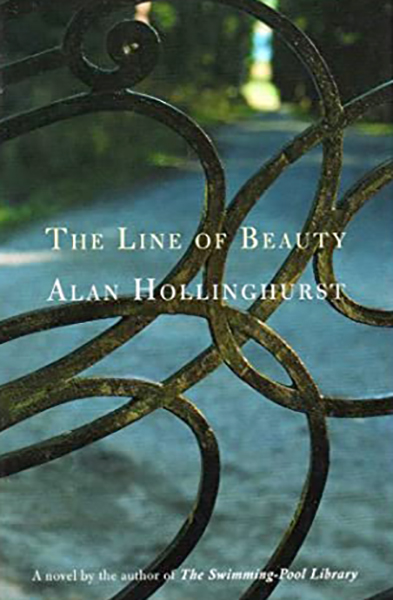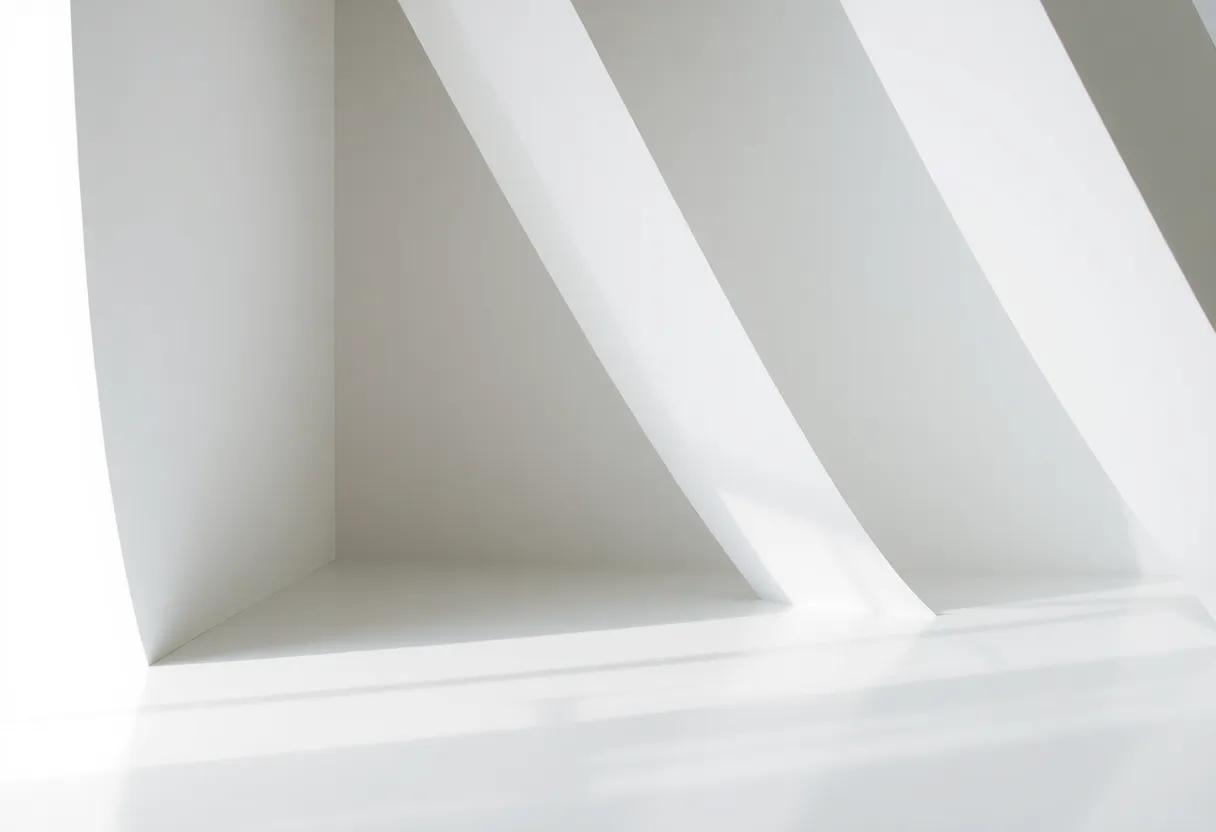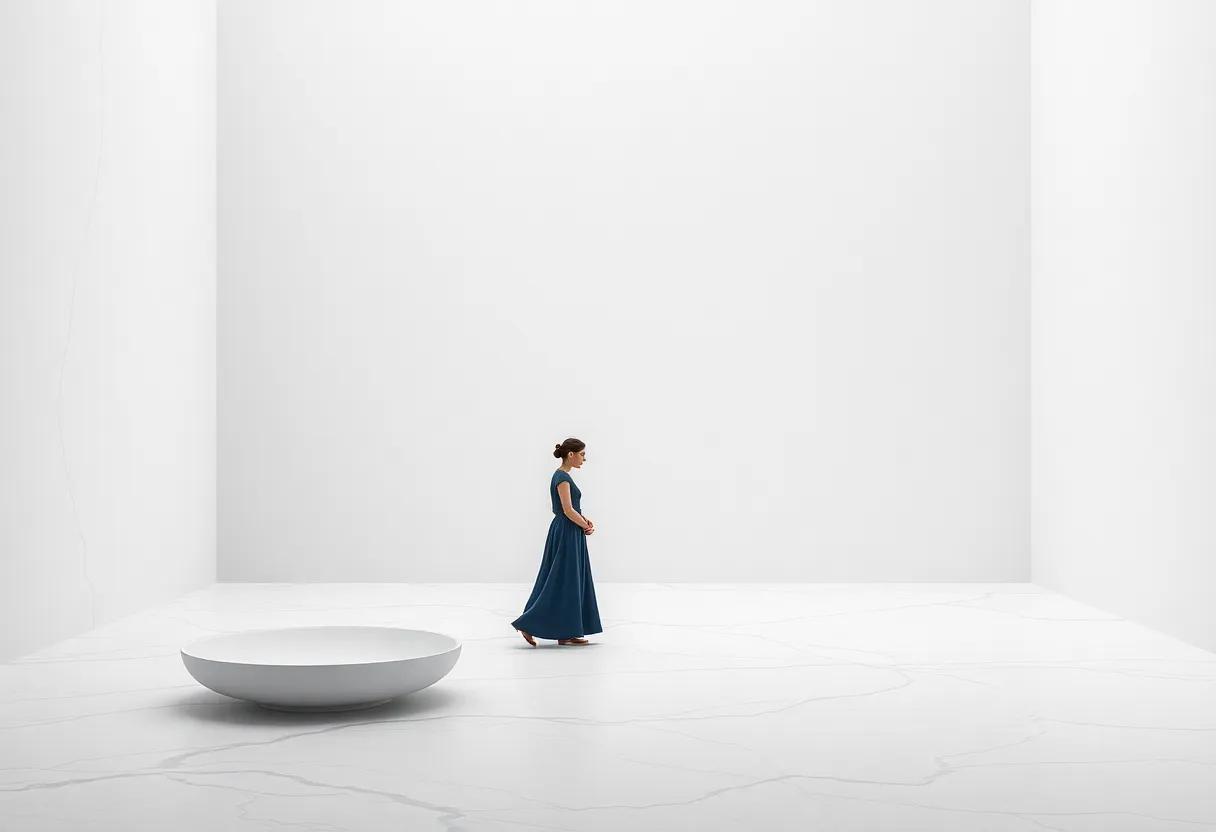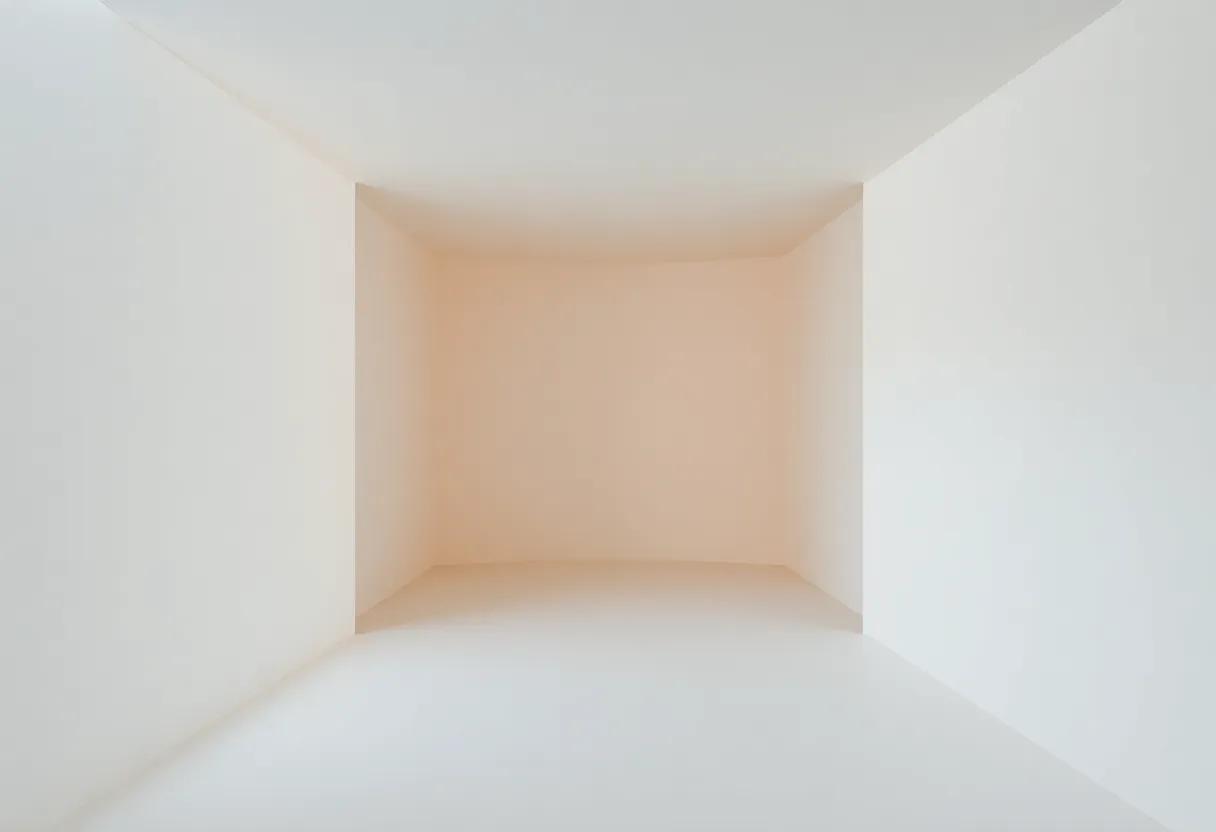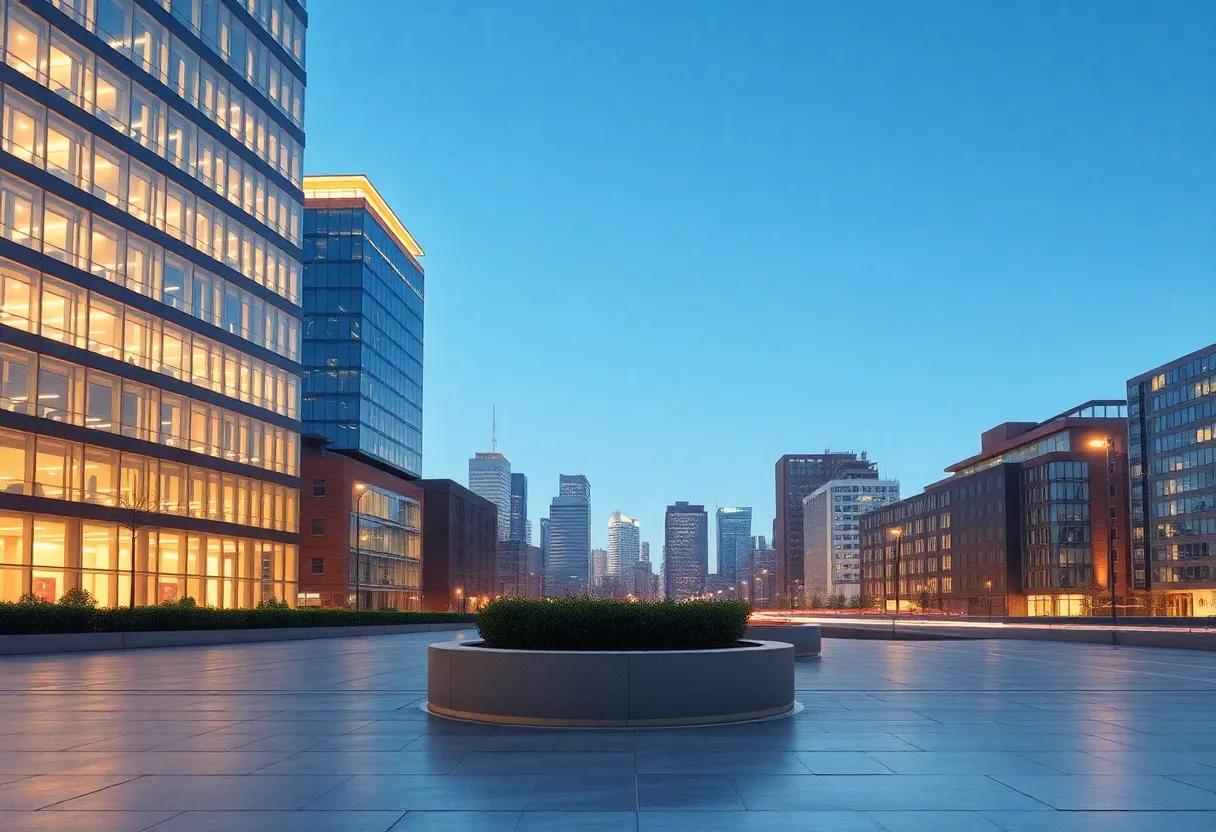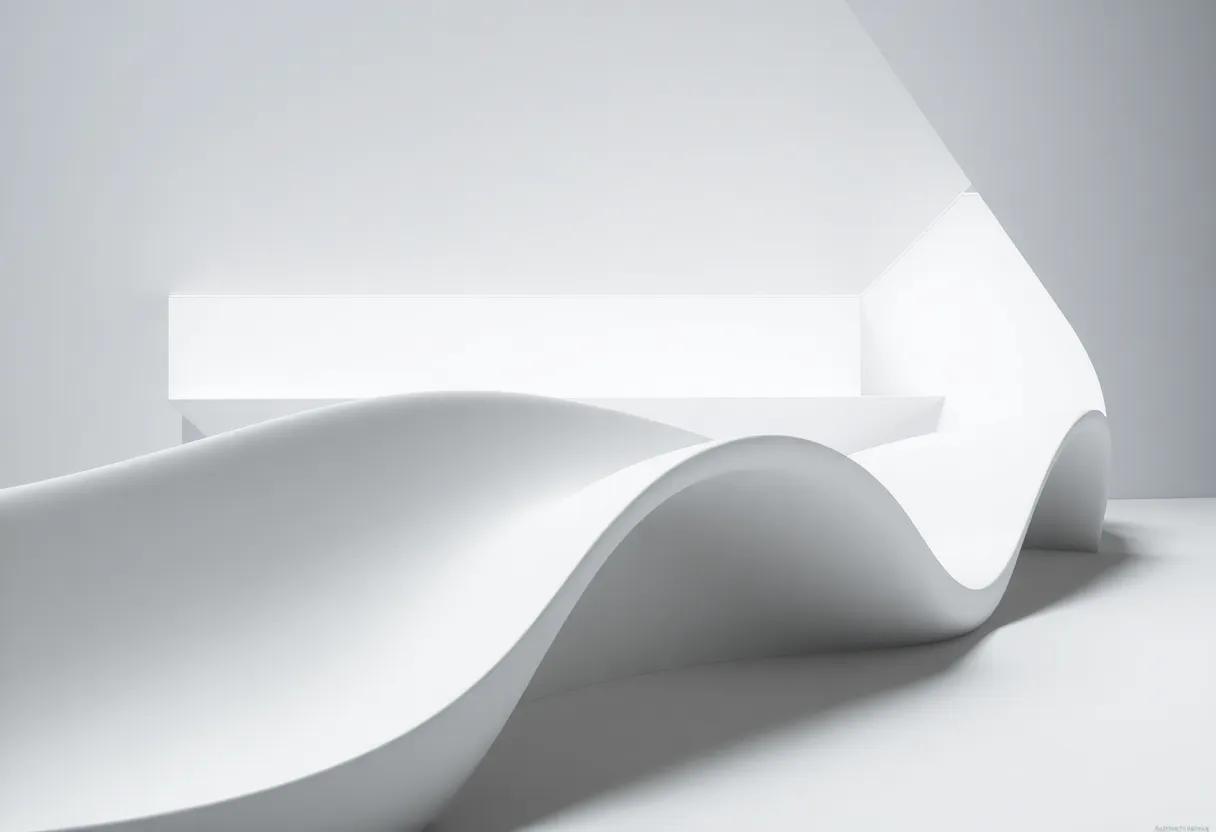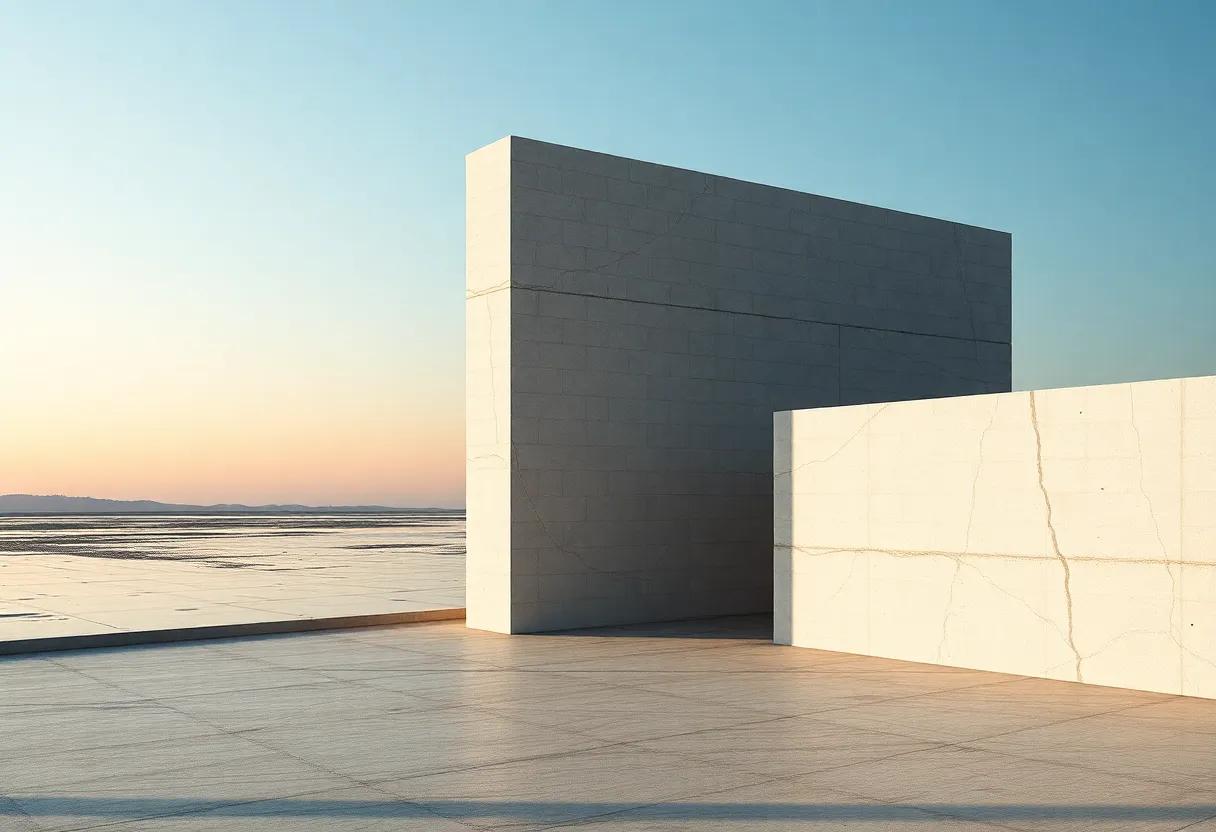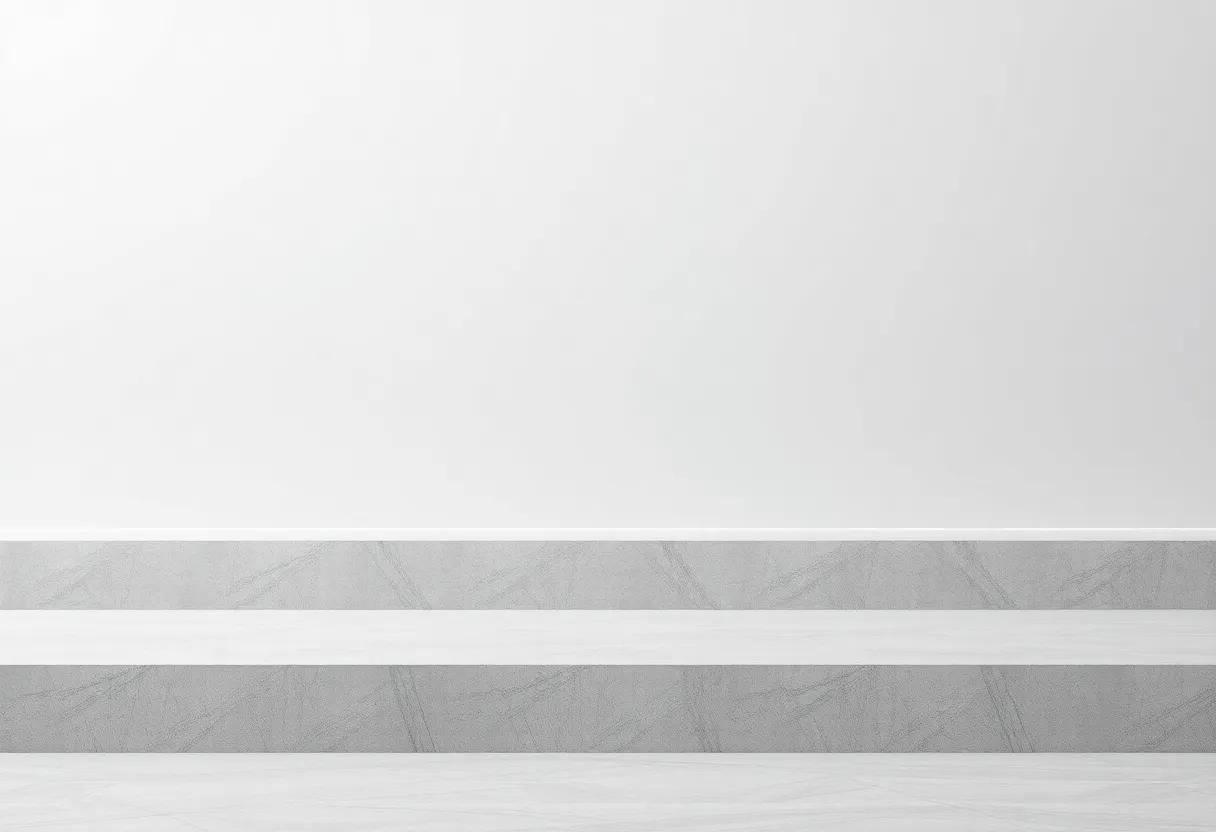In The Line of Beauty,Alan Hollinghurst masterfully weaves a narrative that delves into the intricate landscapes of desire,privilege,and societal complexity during the 1980s in England. As we journey through the life of Nick Guest, a young gay man navigating the charm of a wealthy family, we encounter a world both dazzling and foreboding, where beauty masks deeper entanglements of love and politics. This book review seeks to illuminate the elegant prose and thematic richness of Hollinghurst’s novel, inviting readers to reflect on the delicate balance between aesthetic allure and the undercurrents that shape human connection. Join us as we explore the nuances of three-dimensional characters, the seductive pull of the elite, and the haunting specter of change that defines this unforgettable literary landscape.
Capturing the Aesthetic Essence of Beauty in ‘The Line of Beauty
in “The Line of Beauty,” beauty is not merely an aesthetic pursuit but rather a complex interplay of social dynamics and personal aspirations. The characters navigate a landscape where elegance intertwines with the harsh realities of class and desire. This nuanced depiction is embodied in the lush descriptions of the London setting, where the opulence of the elite contrasts starkly with the underlying tensions of identity and acceptance. The protagonist,Nick,embodies a delicate balance between admiration and envy,revealing how beauty can both elevate and entangle one’s existence. Key elements that contribute to this exploration include:
- Symbolism of Space: The grand homes and exclusive events symbolize the allure of wealth.
- Character Dynamics: Interpersonal relationships highlight the fragility of social standing.
- Artistic Representation: The novel’s rich language mirrors the aesthetic beauty that captivates Nick.
Moreover, the story’s architecture is meticulously crafted, using beauty as a lens to examine the contradictions of human experience. Each character,especially the aristocratic wani,embodies different facets of allure—some found in physical charm,others in intellect or charisma.As Nick navigates through his encounters, the narrative meticulously draws a tapestry of emotions that reflects how beauty can serve as both a source of empowerment and a means of isolation. This duality is evident in:
| Aspect of Beauty | Representation |
|---|---|
| Physical Beauty | The superficial allure that captivates yet confounds relationships. |
| Social Beauty | Interactions that forge bonds and reveal hierarchies. |
| Emotional Beauty | The internal struggles that define personal narratives. |
The Complexity of Identity and Desire in Modern Relationships
The intricacies of desire and self can be seen competing for recognition in the lives of the characters in “The Line of Beauty.” Nick Guest, the protagonist, finds himself navigating a world steeped in class and privilege while grappling with his own sexuality and ambitions. His infatuations are not merely physical but also serve as a quest for acceptance within a society that often casts aside those who do not conform to its norms. the interplay of his identity with his desires leads to a profound exploration of yearning and belonging, as he attempts to reconcile his true self with the expectations placed upon him by both his peers and society at large.
In this modern landscape of relationships, where personal and societal identities are fluid, the complexities manifest in various forms.Relationships intertwine with themes of power dynamics, insecurity, and self-acceptance. For instance, Nick’s evolving dynamics with the wealthy families he befriends expose how economic status can distort personal connections. The following table highlights how these elements shape character interactions throughout the narrative:
| Character | Social Status | desires | Identity Conflict |
|---|---|---|---|
| Nick Guest | Middle-Class | Acceptance & Love | Struggles with Sexuality |
| Leo | Upper-Class | wealth & Power | Conflict with Authenticity |
| Marianne | Upper-class | Fitting in | Conformity vs. Individualism |
This narrative richness serves to illustrate that desire, interwoven with the desire for identity affirmation, frequently enough leads to complex emotional landscapes that challenge individual experiences in modern relationships. Propel by societal expectations and personal yearnings, these entanglements necessitate a reevaluation of what it means to truly belong in an ever-changing world.
Socioeconomic Commentary Through the Lens of a Single Narrative
In “The Line of Beauty,” Alan hollinghurst intricately weaves the narrative of Nick Guest, immersing readers in the opulence and moral complexities of 1980s London. Through Nick’s eyes, we witness the dizzying ascent of the Thatcher era, where class boundaries blur and power dynamics take center stage. This single perspective reveals multifaceted social and economic stratifications, highlighting themes of class disparity, sexuality, and opportunism. As Nick navigates the luxurious world of the wealthy, his experiences underscore the sharp distinctions between his own modest background and the lavish lifestyles of his friends, evoking a poignant sense of longing and disquiet. The contrast serves to illuminate the entangled relationship between personal identity and broader socioeconomic trends, challenging readers to reconsider notions of privilege and desire.
Hollinghurst’s prose offers an elegant yet stark portrayal of the insidious ways that wealth shapes relationships and personal ambition. Through Nick’s encounters, we explore critical issues, such as:
- Economic Inequality: How wealth separates individuals, creating barriers that influence friendship and intimacy.
- Social Mobility: The fleeting nature of status and the dark undertones of aspiration in a capitalist society.
- Art and Aesthetics: The role of beauty in both the allure of wealth and the isolation it can create.
| Theme | Importance |
|---|---|
| Class Conflict | Fractures in relationships; impact on personal identity. |
| Desire | Manipulation and ambition fueled by wealth. |
| Isolation | The loneliness hidden beneath glamour and success. |
The Role of Art and Aesthetic Appreciation in Character Development
The intricate relationship between art and aesthetic appreciation serves as a vital catalyst for character development in literature, revealing the internal conflicts and aspirations of the characters. In “The Line of beauty,” we see how Nick’s fascination with beauty and elegance influences his interactions with the world around him. The novel encapsulates how his admiration for aesthetics leads him into the affluent society of 1980s London, shaping his identity and desires. Through momentary reflections on <displays of opulence and beauty>, Nick experiences a profound revelation about his own insecurities and the subjective nature of beauty, further entangling him in the complexities of class and identity.
Moreover, the exploration of beauty becomes a lens through which the varied dimensions of relationships are examined. The novel masterfully illustrates the contrast between *superficial elegance* and *deep emotional connections*, revealing how characters oscillate between these realms. A few key themes emerge that illustrate this duality:
- Pursuit of Beauty: Nick’s desire for acceptance in elite circles.
- Illusions of Affluence: The dark underbelly of the privileged lifestyle.
- Emotional Vulnerability: The struggle between desire and self-worth.
Through this nuanced portrayal, art serves as both a mirror and a stage for characters to navigate their identities. Each character’s relationship with beauty not only reflects their personal struggles but also critiques societal norms, ultimately enriching the reader’s understanding of the human experience.
Urban Landscapes as a reflection of Emotional Turmoil and Growth
As the narrative unfolds, the relationship between the characters and their urban surroundings becomes increasingly complex. Key elements of urban landscapes serve as symbols of emotional turmoil, such as:
- dilapidated buildings: Representing neglect and the passage of time.
- Vibrant street art: A reflection of hope and self-expression amidst adversity.
- Crowded marketplaces: Illustrating the hustle of life and the craving for connection.
Each scene is crafted with a deliberate tension that embodies the struggle between aspiration and disillusionment. Just as the city evolves, so too do the characters within it, as they navigate through their challenges, ultimately finding beauty in the entwined complexities of their urban existence.
A deep Dive into the Themes of Love and Betrayal
The dichotomy of love and betrayal permeates the narrative of ‘The Line of Beauty,’ acting as a compelling backdrop to the protagonist’s journey. As Nick Guest navigates the opulent world of the 1980s, the seduction of wealth and beauty entwines with an underlying tension in his relationships.This tumultuous interplay reveals the sharp contrasts between genuine affection and the treachery that often lurks beneath polished surfaces. The relationships he builds are defined not only by their intimacy and allure but also by the lurking threat of disillusionment, challenging the notion of trust and authenticity in human connections.
Among the intricate layers of this exploration, the theme of betrayal emerges poignantly.It is subtle yet profound,as characters grapple with their desires and moral ambiguities. Love, in its various forms—romantic, platonic, and familial—creates a rich tapestry that is constantly at risk of unraveling. Notably,the following dimensions express this complex relationship between love and betrayal:
- Illusory Affection: Characters frequently enough misinterpret actions and intentions.
- Power Dynamics: Wealth and status complicate emotional bonds.
- Isolation: Love can lead to vulnerability, exposing the heart to deeper betrayal.
As the tale unfolds, the reader witnesses how the vibrant cityscape and its social milieu serve as both a backdrop and a catalyst for these emotional upheavals. The consequences of betrayal not only fracture relationships but also force a reevaluation of identity and desire. Through Nick’s experiences, capitalism and aestheticism entwine, exemplifying how beauty can mask deeper betrayals—a central irony in the narrative that enriches its emotional depth.
Narrative Structure: Weaving past and Present with Fluidity
in the intricate tapestry of “The line of Beauty,” narrative structure emerges as a powerful device that gracefully blends the past and the present. The protagonist, Nick Guest, navigates a world steeped in the opulence of the 1980s while grappling with the shadows of his own history. Through a series of vivid flashbacks, the reader is drawn into Nick’s formative experiences, capturing his early encounters with art, love, and desire. This fluid movement between time frames serves to enrich the narrative, allowing the reader to see how the echoes of past decisions and revelations shape Nick’s contemporary social landscape. Each memory is a brushstroke, painting a more profound understanding of the intricate relationships he forms with the wealthy and the politically powerful.
As the narrative unfolds, the use of non-linear storytelling creates an immersive atmosphere, where the distinction between time periods blurs, illuminating the fluidity of identity and belonging. The events of the past resonate through Nick’s current life, revealing how the layers of societal expectations, emotional entanglements, and personal aspirations define his existence. This structural choice not only highlights the elegance of Dickensian style but also underscores the complexity of human experience. Through this artful juxtaposition, readers are encouraged to ponder the intricate connections between their pasts and presents, reflecting on how each moment leads to the next with unexpected consequences. The seamless weaving of timelines ultimately enriches the narrative, presenting life as a continuum rather than a series of isolated events.
Character Analysis: Navigating the Flaws and Virtues of Nick Guest
Nick Guest stands as a compelling figure within the tapestry of ‘The Line of Beauty’, embodying a paradoxical blend of flaws and virtues that both endear and repel. A son of modest means, Nick is drawn into an opulent world, characterized by its glamour but brimming with moral ambiguity. His beauty,both physical and intellectual,initially secures him a place within the privileged circles of the 1980s British elite.However, this allure is fraught with complexity; as he navigates his relationships with the wealthy, his desperation for acceptance reveals an unsettling vulnerability. the precariousness of Nick’s socio-economic ascendance,coupled with his longing for love and approval,unravels moments of deep self-doubt and arrogance,showcasing how his flaws often mirror the societal failings around him.
Moreover, Nick’s duality is illuminated through his interactions with key characters, each reflecting different facets of his identity. Through them, readers witness the intricacies of his inner conflict, particularly as he grapples with issues of sexuality, artistry, and morality.A connection to the beautiful yet tragic aspects of human relationships becomes evident as he is drawn to figures like the sophisticated Wani, whose charm masks his own moral transgressions. This juxtaposition serves to highlight Nick’s innate desire for authenticity against a backdrop of artificiality, and ultimately, it contributes to a profound commentary on the era’s cultural ethos. The elegant intricacies of his character not only embellish the narrative but also compel readers to confront unsettling truths about the nature of beauty and the human condition.
The Power of Nostalgia in Shaping Personal and Collective Memory
The allure of nostalgia weaves a rich tapestry that connects the past to the present, allowing individuals to explore the depths of their experiences and emotions.In “The Line of Beauty,” the protagonist’s journey reflects this power as he navigates the aesthetic landscapes of 1980s Britain, a period marked by cultural upheaval and personal conversion. The longing for a simpler, more beautiful time becomes a constant undercurrent, inviting readers to reflect on their own memories. Through vivid imagery and character introspection, the novel evokes feelings of both beauty and loss, intertwining personal and collective memories that resonate within the broader context of societal change.
As nostalgia seeps into the narrative, it creates a nuanced lens through which we examine the complexities of identity and belonging. In various moments, the protagonist’s memories become symbols of a fleeting elegance, hinting at the fragility of human connections. This interplay between past and present generates a space where readers can engage with the following themes:
- Memory as a Construct: The way memories are shaped by our perceptions.
- Beauty in Imperfection: The recognition that past experiences, even if bittersweet, contribute to our understanding of beauty.
- Interpersonal Relationships: How nostalgia can both bolster and complicate our connections with others.
In illustrating these points, the novel serves as a mirror reflecting the intricate dynamics of individual and shared experiences, demonstrating how nostalgia influences our understanding of beauty and the human condition.
Symbolism and Motifs: Unpacking layers of Meaning in the text
In ‘The Line of Beauty’, the interplay of elegance and entanglement manifests through a rich tapestry of symbolism that deepens our understanding of the protagonist’s internal and external struggles. At the core of the narrative lies the theme of beauty—a fleeting yet powerful force that seduces the characters and draws them into complex relationships. This motif of beauty not only reflects the opulence of 1980s London but also serves as a mask for the underlying tensions of class,sexuality,and societal expectations. Key symbols that encapsulate this dichotomy include:
- Architecture: The grandeur of homes signifies status but also entraps its inhabitants.
- Art: Represents both aspiration and the ability to transcend conventional boundaries, though often comes at a personal cost.
- Nature: Serves as a contrast to urban life, highlighting characters’ desires for authenticity amidst artificial beauty.
As we delve deeper, the novel’s use of colour and light emerges as another vital motif.Colors like gold and white frequently enough symbolize purity and wealth, while shadowy tones reflect the moral ambiguity enveloping the characters’ choices. This nuance is captured beautifully in the following table, which contrasts meaningful colors and their meanings:
| Color | Symbolic Meaning |
|---|---|
| Gold | affluence and glamour, yet masks underlying corruption. |
| White | Purity and idealism,often challenged by reality. |
| Dark Blue | Emotional depth, reflecting melancholy and complexity. |
This intricate layering of symbolism and motifs invites readers to examine the dualities present within the aesthetic experience of life, urging an exploration of how beauty conceals as much as it reveals.By unearthing these profound themes, ‘The Line of Beauty’ offers a poignant commentary on the seductive allure of elegance and its inevitable entanglements.
Cultural Context: How Historical Elements Shape the Story
The backdrop of ‘The Line of Beauty’ is an intricate tapestry woven from the threads of 1980s Britain, an era brimming with political tensions and cultural transformation. Within this setting, the protagonist, Nick guest, navigates the world of privilege and decadence, juxtaposed against a socio-political landscape marked by Conservative governance and the specter of the AIDS crisis. the cultural nuances of the time influence character interactions, where issues of class, sexuality, and privilege become not only personal struggles but also reflections of broader societal shifts. The opulence of the characters’ lifestyles starkly contrasts with the undercurrents of anxiety and uncertainty, setting a poignant stage for Nick’s exploration of beauty and belonging amid turbulence.
The historical elements are not merely a backdrop but an active participant in the narrative, highlighting the disjunction between surface glamour and underlying turmoil. Key themes emerge through various cultural lenses:
- Class Disparity: the disparity between the affluent lives of the Wellbeloved family and the socioeconomic realities faced by those outside their sphere.
- Sexual Politics: The evolving acceptance and stigmatization of homosexuality create a complex backdrop for Nick’s identity and desires.
- Art and Aestheticism: The allure of beauty embodies a historical longing for stability amidst chaos, elevating aesthetic experiences into acts of defiance against the era’s harsh realities.
Recommendations for Further Reading on Similar Themes
Delve deeper into the rich tapestry of life, society, and aesthetics with these evocative works that resonate with the themes explored in ‘The Line of Beauty’. Each selection offers a unique perspective, weaving together the complexities of human relationships and the intricate dance of beauty and morality. Consider these:
- ‘The Picture of Dorian Gray’ by Oscar Wilde – A compelling narrative that examines vanity, aestheticism, and moral duplicity.
- ‘Atonement’ by Ian McEwan – An interlacing tale of love, war, and consequences that transcends time.
- ‘The Beautiful and Damned’ by F. Scott Fitzgerald – A vivid portrayal of the Jazz age’s allure and the corruption beneath its elegant surface.
For those seeking a more contemporary lens, these selections are particularly illuminating. They offer reflections on identity, privilege, and the nuances of interpersonal dynamics, aligning perfectly with the explorations found in Hollinghurst’s work:
| Title | Author |
|---|---|
| ‘The Goldfinch’ | Donna Tartt |
| ‘The Luminaries’ | Ellie Aitken |
| ‘Never Let Me Go’ | Kazuo Ishiguro |
Critique of Stylistic Choices and Their Impact on the Reader
Within the tapestry of ‘The Line of Beauty’, the author employs an intricate weave of stylistic choices that serve not only to embellish the narrative but also to shape the reader’s emotional experience. through a rich palette of descriptive language,the novel captures the beauty and decadence of 1980s england.This immersion invites readers into a world that is both alluring and suffocating, revealing layers of irony through its opulent settings and complex characters. The juxtaposition of elegant prose with raw, often unsettling themes engenders a response that is at once enchanting and disquieting, compelling the reader to confront the dissonance between beauty and moral decay. Particularly, the use of metaphor and imagery helps to illuminate deeper truths, engaging the reader’s senses and stimulating not just visual appreciation but also introspection on the cultural currents of the time.
The structure of the narrative further enhances this impact,as the rhythmic flow of sentences and the carefully chosen pacing echo the protagonist’s internal struggles. Employing a mix of stream of consciousness and traditional narrative forms, the author crafts a disorienting yet captivating reading experience. Consider the thematic concentration illustrated in the table below, which outlines key stylistic elements and their effects on reader engagement:
| Stylistic Element | Impact on Reader |
|---|---|
| Imagery | Creates vivid mental pictures, evoking strong sensory reactions. |
| Metaphor | Encourages deeper understanding and reflection on themes. |
| Stream of Consciousness | Fosters a sense of intimacy with characters’ thoughts and emotions. |
These stylistic choices work synergistically to immerse the reader in a medley of beauty and entanglement, mirroring the protagonist’s own experiences. Consequently, ‘The line of Beauty’ transcends simple storytelling, evolving into a canvas that invites a broader discussion on the nature of beauty and its implications within society. through these intricate choices,the narrative compels readers to not only witness the struggles of its characters but also engage in a critical examination of their own perceptions of elegance and moral complexity.
The Mastermind Behind the Narrative: Insights on Alan Hollinghurst
Alan Hollinghurst’s literary prowess is most evident in his ability to weave intricate narratives that explore themes of beauty, desire, and the complexities of human relationships. His novel, “The Line of Beauty,” serves as a vivid canvas upon which the tensions of class, sexuality, and the search for identity are painted with elegance. through the eyes of Nick Guest, we are introduced to a world steeped in privilege and artifice, where the superficial glimmers of wealth intersect sharply with the darker undercurrents of personal and societal disintegration. In this setting, Hollinghurst’s prose shines—lyrical yet incisive, capturing the euphoric highs and melancholic lows that define his characters’ experiences.
A hallmark of Hollinghurst’s storytelling is his acute attention to detail and atmosphere, a quality that immerses readers in the vibrant yet volatile tapestry of 1980s England. His deft use of sensory imagery and evocative descriptions not only enriches the narrative but also encourages readers to engage with the text on a visceral level. Consider these themes prevalent in his work:
- The Clash of Ideals: The juxtaposition of personal values against societal expectations.
- Intimacy and Alienation: The fine line between closeness and isolation in relationships.
- Political Undertones: Commentary on the intersection of politics and personal lives during a transformative era.
The careful construction of Nick’s relationships reveals Hollinghurst’s skillful manipulation of character dynamics, examining how intimacy can foster both connection and conflict. This duality is particularly poignant when considering how beauty can entrap, offering allure while simultaneously constraining. As we journey through the narrative, we confront not only our own understandings of aestheticism and authenticity but also the broader implications of how these concepts operate within a society teetering on the edge of change.
In Conclusion
“The Line of Beauty” weaves a rich tapestry of social observation, personal longing, and the intricacies of human relationships. It invites readers into a world where elegance is frequently enough marred by the complexities of desire and ambition, revealing the entangled lives of its characters with poignant clarity. As we turn the final page, we are left reflecting on how beauty, in its many forms, is perpetually inextricable from the very human flaws that shape our existence. For those willing to navigate its layered narratives, the novel offers profound insights into the nature of love, class, and the often blurred lines between aspiration and authenticity. Such explorations linger in the mind long after the book is closed,urging us to consider our own entanglements in the pursuit of beauty.

